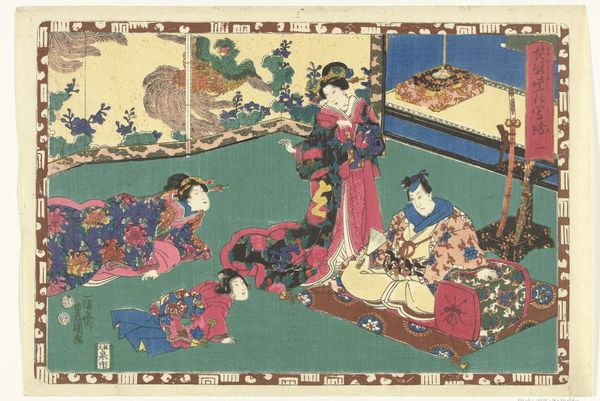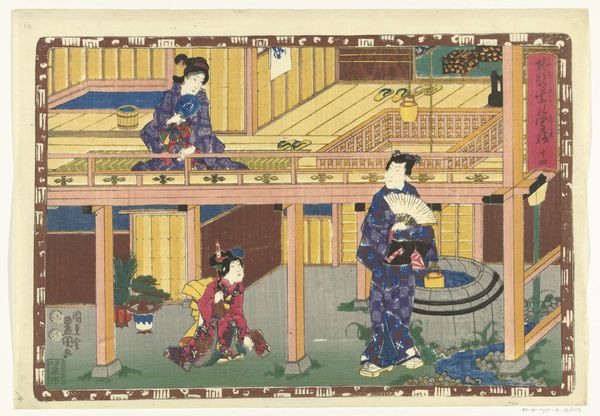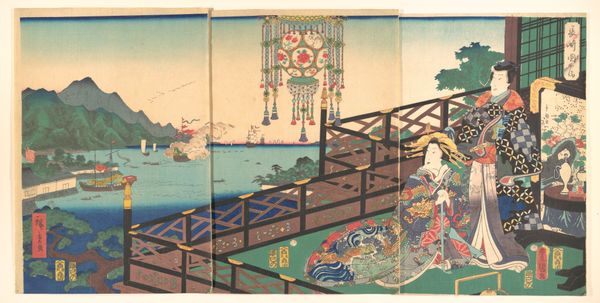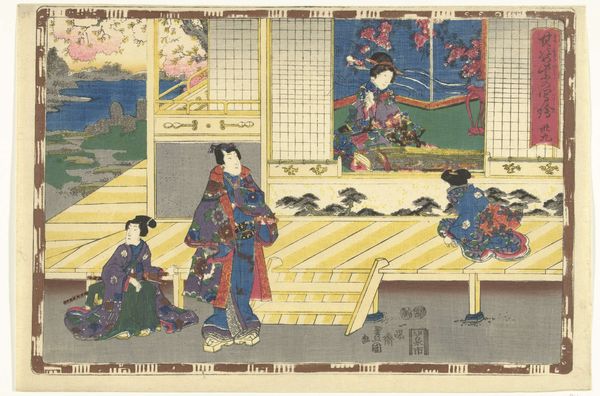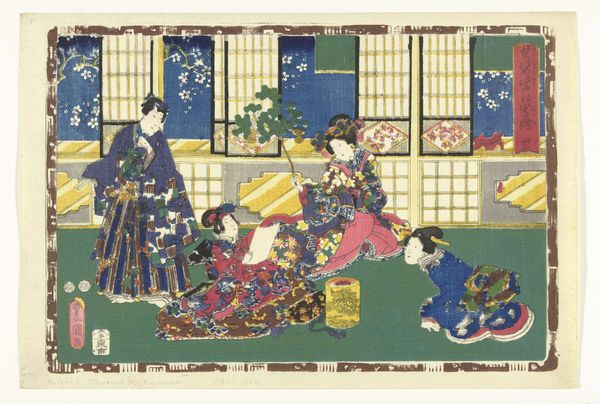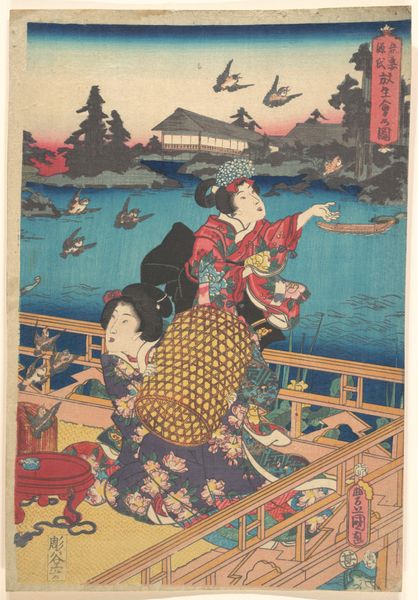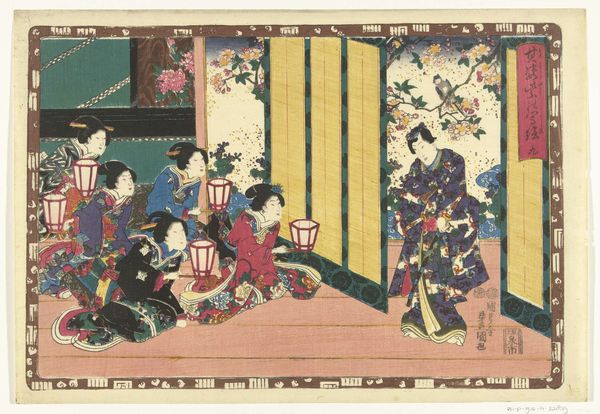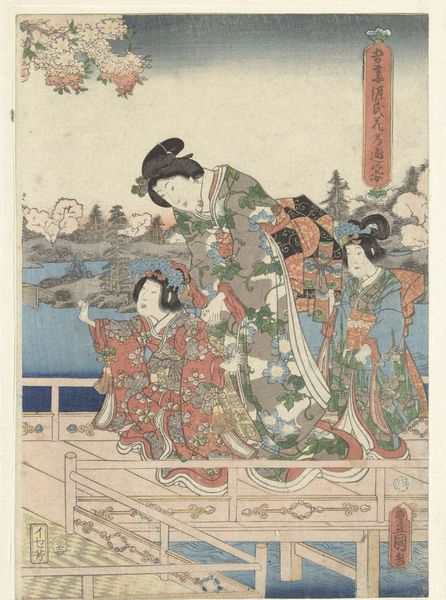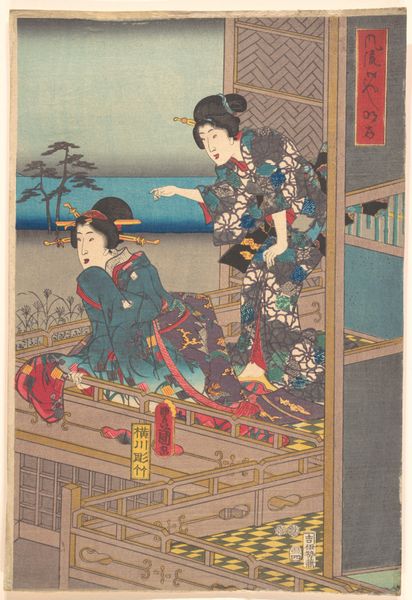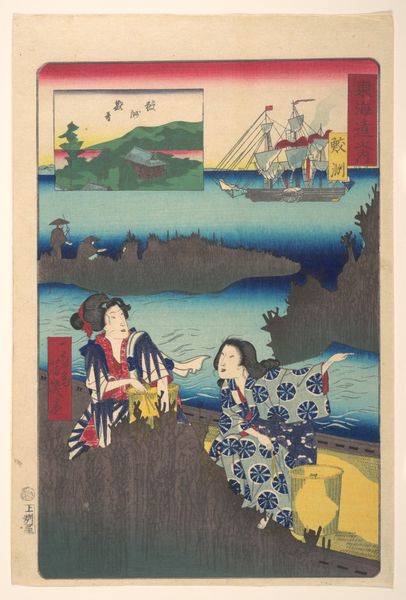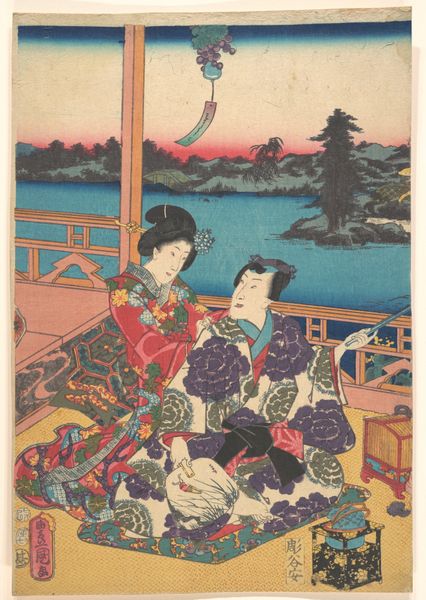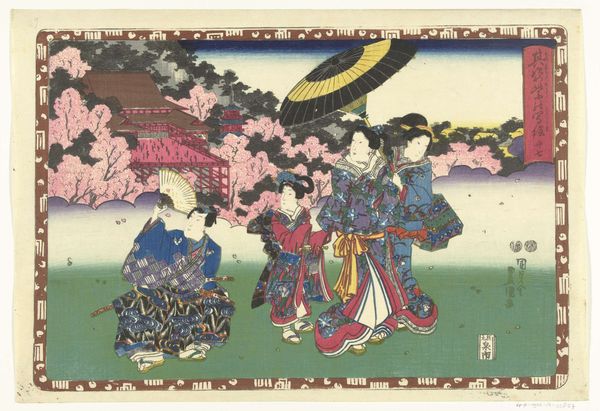
print, watercolor, woodblock-print
# print
#
asian-art
#
landscape
#
ukiyo-e
#
figuration
#
watercolor
#
woodblock-print
#
watercolour illustration
#
genre-painting
#
watercolor
Dimensions: height 258 mm, width 378 mm
Copyright: Rijks Museum: Open Domain
Editor: This woodblock print, dating from 1851 to 1853, is entitled "Hoofdstuk 33" and was crafted by Utagawa Kunisada. My immediate response is to its stylized theatricality. It’s less a view and more a stage. Curator: I would agree that the composition embraces artifice. The juxtaposition of the women in the boat against the flat, almost geometrical rendition of the water and the constructed space to the right generates a compelling visual tension. Notice how the artist employs distinct perspectives. Editor: Distinct indeed! The water, the structure on the right; each element operates on its own planar logic. As a woodblock print, the material considerations become so prominent. I am curious about the social context of this print’s production; were such vibrant dyes costly to produce, thus impacting the consumption of art? Curator: Interesting question. Beyond mere consumption, let us note the print's graphic quality and stylized form aligns directly with the Ukiyo-e tradition. I would argue that such aesthetic features, paired with narrative and thematic aspects, elevate this image beyond a genre painting to achieve more significant, aesthetic import. Editor: Aesthetic import stemming from what, exactly? For whom? Was it intended as art, or a decorative artifact speaking to societal conventions? Curator: I am curious about that point also. Looking closely at its graphic arrangement, how much is an expressive attempt versus a convention? Editor: Absolutely. Woodblock printing’s proliferation as a method accessible to various artisan workshops speaks volumes about shared labor—the hands engaged in the carving of the blocks, the mixing of pigments, the pressing and distribution… Curator: A collaborative venture certainly influencing its form, though each mark in a plane participates in larger systems that generate layers of meaning for the reader. The flat washes, the decisive lines: together, a complex system of signs communicating through cultural syntax. Editor: To unpack those signs thoroughly, a deeper dive into 19th-century Japanese workshops and dissemination networks will be invaluable to trace their true symbolic resonance for contemporary eyes. Thank you for your insight. Curator: It has been a genuine pleasure decoding this rich woodblock print with you.
Comments
No comments
Be the first to comment and join the conversation on the ultimate creative platform.

